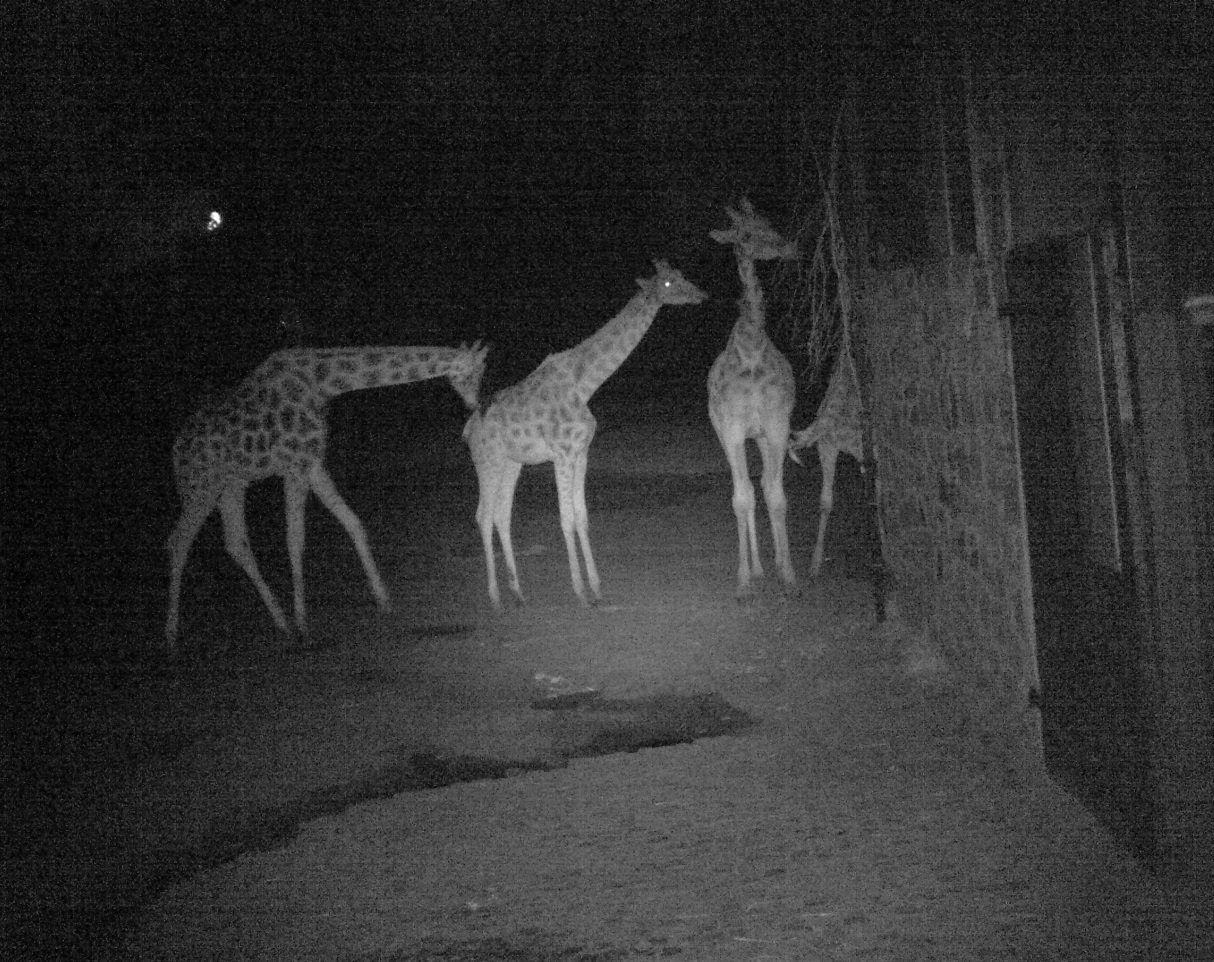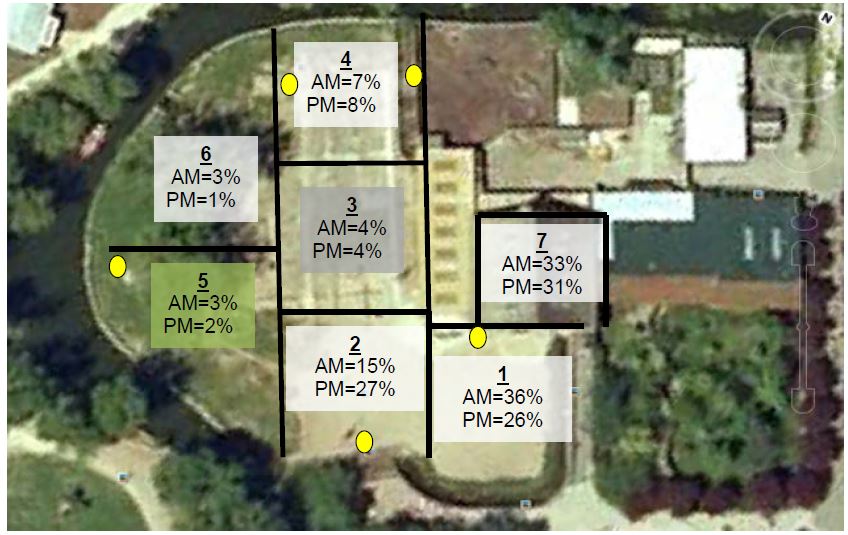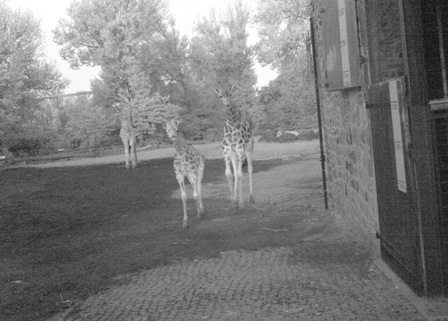We want to encourage as many natural behaviours in our zoo animals as possible. We’ve been studying the behaviours of our Rothschild’s giraffes and how they use their paddock. In the wild, Rothschild’s giraffes have specialised diets which means they will spend large quantities of their time grazing and moving from place to place.
During the summer months, our herd of Rothschild’s giraffes have 24 hour access to their outdoor paddock. However, we did not know how they used the space or if the different giraffes had preferences for where they spent the majority of their time.

To better understand our herd’s behaviour and help the animal care staff make husbandry decisions, we recorded individual behaviour and movement during the day and the night using infra-red cameras to film activity levels and determine how the giraffes use the paddock.
We found that all our giraffe’s used the paddock at night and over the course of the day, the majority of time was spent in areas where food was available.

Throughout winter the areas the giraffes used the least tended to be those with a wet ground, which may have discouraged the giraffes from moving there. So, as a result of this project, the animal care staff considered the option to lay sand over the wet areas and offer more browsing opportunities to encourage use of the full paddock all year round.

Studies like this are important to help our animal teams make important husbandry decisions, based on scientific evidence, to promote the natural behaviours our animals would display in the wild.